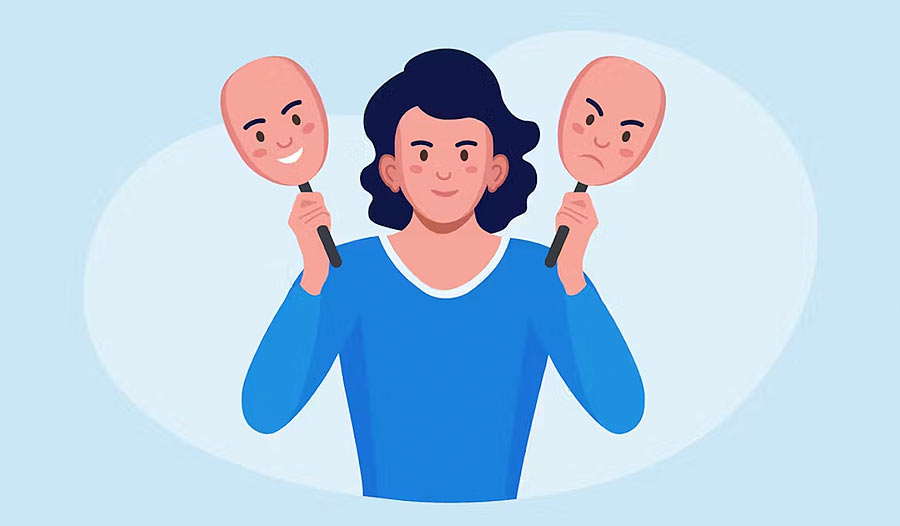Bipolar disorder, sometimes referred to as manic-depressive disease or manic depression, is a mental health condition that produces significant mood swings, energy fluctuations, and behavioral and thought patterns irregularities. It is a lifelong condition. Your ability to do everyday tasks may be disrupted by these shifts, which may persist for hours, days, weeks, or months. The overall prevalence of this disorder is somewhere between o.3%-0.5% in India. Both males and females are equally affected with Bipolar I whereas Bipolar II is more prevalent in females.
A few different forms of bipolar illness are characterized by intense mood swings known as hypomanic/manic and depressed episodes. People who have bipolar illness don't, however, constantly have manic or hypomanic episodes. They also go through euthymia, or times when their mood is normal.
Manic episodes include:
- Elevated mood.
- Abrupt and drastic mood swings,
- Being anxious and agitated
- Grandiose ideas.
- Decreased need for sleep.
- Impulsive behavior, such as quitting your work abruptly.
- Formulating big and unachievable ideas.
- Reckless and risk-taking behaviors, including abusing drugs or alcohol and engaging in unprotected or dangerous sexual encounters.
- Having an extraordinary sense of importance, talent, or power.
- Psychosis- having delusions and hallucinations (in the most extreme manic episodes)
Depressive episodes include:
- Low mood and energy
- Hopelessness or Worthlessness
- Diminished interest
- Crying spells
- Decreased appetite
- Sleep disturbances
- Overthinking or suicidal ideas
Types:
- 1. Bipolar I - At least one manic episode, maybe preceded or followed by significant depressive or hypomanic episodes. Mania can occasionally lead to psychosis or a disassociation from reality.
- 2. Bipolar II - presentation of at least one severe depressive episode and one hypomanic episode. there’s no history of a manic episode.
- 3. Cyclothymic disorder - marked by many episodes of hypomania symptoms and depressive episodes (not as severe as major depression) for at least two years, or one year in the case of children and teens.
- 4. Other - bipolar disorder caused by intake of drugs or alcohol, or resulting from a physical illness like multiple sclerosis, stroke, or Cushing's disease.
Treatment:
With proper treatment and support, the symptoms of bipolar disorder can be managed. Treatment often results in an improvement in bipolar disorder symptoms. The primary form of treatment for bipolar disorder is medication, however, talk therapy, often known as psychotherapy, can assist many people in understanding their condition and taking their medication as prescribed, which can help prevent more mood episodes in future.



